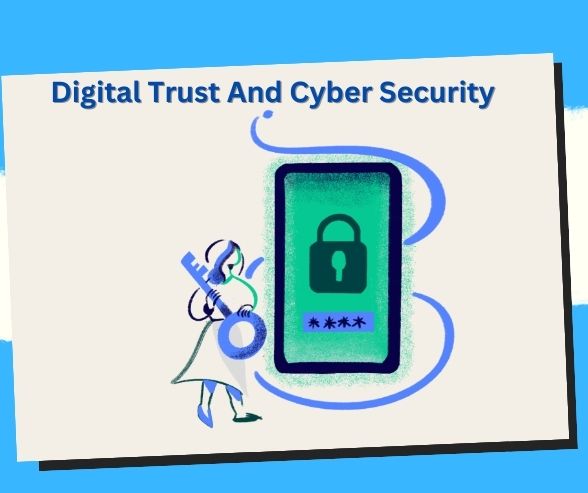
Empower Your Security: The Comprehensive Guide to Setting Up Multi-Factor Authentication
Guard your identity against cyber threats! Follow our step-by-step tutorial on implementing multi-factor authentication and add an extra layer of protection to your accounts.
Fortifying Your Digital Citadel: A Comprehensive Guide to Establishing Multi-Factor Authentication for Enhanced Security 

In the ever-expanding digital landscape, securing your accounts goes beyond the traditional password. Multi-factor authentication (MFA) emerges as a powerful ally, adding an extra layer of defense against cyber threats. Join us on this journey to fortify your digital presence through the implementation of MFA.
 Unveiling the Power of Multi-Factor Authentication
Unveiling the Power of Multi-Factor Authentication
What is Multi-Factor Authentication (MFA)?
Multi-factor authentication (MFA) is a security measure that requires users to provide multiple forms of identification before granting access to an account or system. It typically involves a combination of something you know, something you have, and something you are.
 Step 1: Choose the Right MFA Method
Step 1: Choose the Right MFA Method
Not all MFA methods are created equal. Select the MFA method that aligns with your security needs. Options include text messages, authenticator apps, biometrics, and hardware tokens.
 Step 2: Enable MFA on All Your Accounts
Step 2: Enable MFA on All Your Accounts
Once you’ve chosen the preferred MFA method, enable it on all your accounts that offer this security feature. This includes email, social media, banking, and other online platforms.
 Step 3: Create Strong, Unique Passwords
Step 3: Create Strong, Unique Passwords
Before implementing MFA, ensure your passwords are robust. MFA works best when combined with a strong foundation, so update your passwords using a mix of letters, numbers, and symbols.
 Step 4: Use Authenticator Apps for Added Security
Step 4: Use Authenticator Apps for Added Security
Authenticator apps generate time-sensitive codes that are harder for hackers to intercept. Consider using apps like Google Authenticator or Authy for an additional layer of security.
 Step 5: Keep Backup Codes Secure
Step 5: Keep Backup Codes Secure
Many platforms provide backup codes in case you lose access to your primary authentication method. Store these codes in a secure location, like a password manager or a physical vault.
 Step 6: Educate Your Team or Family
Step 6: Educate Your Team or Family
If implementing MFA for a group, ensure everyone understands the importance of MFA and how to use it. Education is key to a successful implementation.
 Step 7: Implement Biometric Authentication
Step 7: Implement Biometric Authentication
For devices that support biometrics (fingerprint or facial recognition), enable this feature for a seamless yet secure login experience.
 Step 8: Regularly Review and Update MFA Settings
Step 8: Regularly Review and Update MFA Settings
As technology evolves, so do security threats. Regularly review and update your MFA settings to stay ahead of potential vulnerabilities.
 Step 9: Monitor MFA Alerts
Step 9: Monitor MFA Alerts
Stay vigilant by monitoring MFA alerts. If you receive an alert about an unauthorized attempt to access your account, take immediate action.
 Step 10: Consider Hardware Tokens for High-Security Accounts
Step 10: Consider Hardware Tokens for High-Security Accounts
For critical accounts, such as those with financial or sensitive information, consider using hardware tokens for an added layer of physical security.
 Key Takeaways
Key Takeaways
- Choose the Right MFA Method: Select the method that best suits your security needs.
- Enable MFA Everywhere: Implement MFA on all accounts that offer this security feature.
- Create Strong Passwords: MFA works best in tandem with robust, unique passwords.
- Use Authenticator Apps: Consider using authenticator apps for enhanced security.
- Secure Backup Codes: Keep backup codes in a secure location for emergencies.
- Educate Your Team: Ensure everyone understands the importance and usage of MFA.
- Implement Biometrics: Enable biometric authentication for supported devices.
- Regularly Review Settings: Stay ahead of potential vulnerabilities by updating MFA settings regularly.
- Monitor MFA Alerts: Act promptly if you receive alerts about unauthorized access attempts.
- Consider Hardware Tokens: For high-security accounts, explore the use of hardware tokens.
 Frequently Asked Questions
Frequently Asked Questions
- Is MFA Necessary for Every Account?
While not mandatory, enabling MFA on all accounts enhances overall security. - Can I Use MFA Without a Smartphone?
Yes, many MFA methods, such as hardware tokens or SMS codes, don’t require a smartphone. - What Happens if I Lose My Authenticator App?
Use backup codes or contact the platform’s support for assistance in regaining access. - Can MFA Prevent Phishing Attacks?
MFA is a powerful defense against phishing, as it requires an additional verification step even if credentials are compromised. - Should I Disable MFA When Traveling?
It’s advisable to keep MFA enabled, but have backup codes accessible in case your primary method is unavailable. - Can I Use MFA for Multiple Users on a Single Account?
Depending on the platform, you can set up MFA for multiple users on shared accounts. - Do I Need MFA for Social Media Accounts?
Yes, enabling MFA on social media accounts adds an extra layer of protection for your personal information. - Are Biometrics Safe for MFA?
Biometrics can be secure; however, it’s crucial to use reputable devices with robust security measures. - What Should I Do if I Forget My MFA Credentials?
Contact the platform’s support for assistance in recovering your account. - Can MFA Be Used in Business Environments?
Yes, MFA is highly recommended for business environments to protect sensitive data and access.
Top 10 Best Resources on Multi-Factor Authentication (MFA)
General Information:
1. National Institute of Standards and Technology (NIST): Special Publication 800-63-B: Digital Identity Guidelines
This comprehensive guide from NIST covers various aspects of digital identity, including MFA and its benefits.
https://nvlpubs.nist.gov/nistpubs/SpecialPublications/NIST.SP.800-63B.pdf
2. Microsoft 365 for business security best practices
This Microsoft resource explains the importance of MFA and its implementation options for Microsoft 365 users.
3. 10 Things You Should Know About Multi-Factor Authentication
This article by Fordham IT News provides a concise overview of MFA and its key features.
https://itnews.blog.fordham.edu/10-things-you-should-know-about-multi-factor-authentication/
Technical Details and Implementation:
4. Duo Security: Multi-Factor Authentication Guide
This comprehensive guide from Duo Security covers various aspects of MFA, including different factors, best practices, and implementation considerations.
5. Yubico: The Complete Guide to Multi-Factor Authentication
This guide from Yubico provides a detailed overview of MFA, its types, and how to choose the right solution.
https://www.yubico.com/resources/what-is-multi-factor-authentication/
6. Google: 2-Step Verification
This Google resource explains how to set up and use 2-step verification (a type of MFA) on your Google account.
https://support.google.com/accounts/answer/185833
Benefits and Security Impact:
7. Authy: Multi-Factor Authentication: The Ultimate Guide to Stopping Hackers
This article from Authy highlights the benefits of MFA and its role in preventing cyberattacks.
8. Cloudflare: The State of Multi-Factor Authentication in 2023
This report from Cloudflare analyzes the current state of MFA adoption and its impact on security.
https://blog.cloudflare.com/application-security-2023
9. FIDO Alliance: What is FIDO?
This website from the FIDO Alliance provides information about the Fast Identity Online (FIDO) standard, a secure and user-friendly approach to authentication.
Additional Resources:
10. National Cyber Security Alliance: Multi-Factor Authentication
This website from the National Cyber Security Alliance provides information about MFA and tips for using it securely.
https://staysafeonline.org/online-safety-privacy-basics/multi-factor-authentication/
Remember, MFA is a critical security measure that can significantly improve the security of your online accounts. By using these resources and learning more about MFA, you can protect yourself from cyberattacks and keep your data safe.
Conclusion
Embracing Multi-Factor Authentication (MFA) is not just a security enhancement; it is a powerful strategy to empower your digital defenses against a myriad of cyber threats. As our digital interactions become more complex, the need for robust authentication methods has never been more critical.
This comprehensive guide has walked you through the intricacies of setting up MFA, providing a roadmap to fortify your accounts and systems. By implementing MFA, you’re not only safeguarding sensitive information but also adding an extra layer of resilience against unauthorized access.
Remember, MFA is a versatile tool applicable to various aspects of your digital life – from personal email accounts to critical business systems. As you integrate MFA into your security arsenal, you’re actively contributing to a more secure digital landscape.
As you embark on this journey to enhance your security posture with MFA, stay informed about emerging threats, encourage others to adopt this powerful security measure and champion a culture of cybersecurity awareness. Let Multi-Factor Authentication be the cornerstone of your digital fortification, ensuring that your online presence remains secure, trusted, and resilient in the face of evolving cyber challenges.
 Key Phrases
Key Phrases
- Multi-Factor Authentication Methods
- Authenticator Apps
- Biometric Security
- Backup Code Management
- MFA Education
- Hardware Token Implementation
- Continuous Security Monitoring
- MFA for Critical Accounts
- Secure Password Practices
- Vigilance Against Unauthorized Access
 Best Hashtags
Best Hashtags
- #MFAsecurity
- #DigitalProtection
- #SecureAuthentication
- #BiometricPrivacy
- #AuthenticatorApps
- #CyberSecurityTips
- #PasswordStrength
- #DataGuardianship
- #DigitalVigilance
- #HardwareTokenSecurity
Save/Share this story with QR CODE
Disclaimer
This article is for informational purposes only and does not constitute endorsement of any specific technologies or methodologies and financial advice or endorsement of any specific products or services.
 Need to get in touch?
Need to get in touch?

We appreciate your reading. 
1.) 

Your DONATION will be used to fund and maintain NEXTGENDAY.com
Subscribers in the Philippines can make donations to mobile number 0917 906 3081, thru GCash.
3.) 
4.) 
AFFILIATE PARTNERS

World Class Nutritional Supplements - Buy Highest Quality Products, Purest Most Healthy Ingredients, Direct to your Door! Up to 90% OFF.
Join LiveGood Today - A company created to satisfy the world's most demanding leaders and entrepreneurs, with the best compensation plan today.

 Business, Finance & Technology
Business, Finance & Technology





